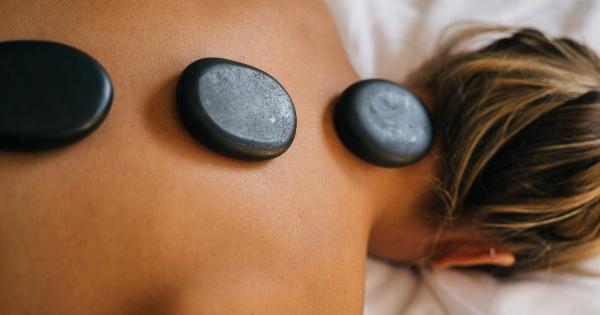Back pain is a common ailment that affects millions of people worldwide. In most cases, the source of the pain can be traced back to the spine.
The spine is a complex structure that runs from the neck to the pelvis, made up of bones, muscles, nerves, and connective tissues. The middle back, or thoracic spine, is an area that is prone to pain due to its location and the role it plays in supporting the upper body. In this article, we’ll explore the different sources of middle back pain and how to identify them.
Types of Middle Back Pain
Pain in the middle back can be broken down into two main categories: mechanical and inflammatory.
Mechanical Pain
Mechanical pain is caused by damage to the structures of the spine, such as the bones, joints, ligaments, and muscles. The most common causes of mechanical pain are:.
- Herniated discs
- Bone spurs
- Osteoarthritis
- Muscle strains and sprains
- Posture-related pain
Inflammatory Pain
Inflammatory pain is caused by conditions that lead to inflammation of the spine or surrounding tissues. These conditions may include:.
- Ankylosing spondylitis
- Rheumatoid arthritis
- Psoriatic arthritis
- Fibromyalgia
- Osteoporosis
Symptoms of Middle Back Pain
Symptoms of middle back pain vary depending on the underlying cause. Some common symptoms include:.
- Aching or stiffness in the middle back
- Pain that worsens with movement
- Difficulty bending or twisting
- Numbness or tingling in the arms or legs
- Weakness in the arms or legs
- Loss of bladder or bowel control (in severe cases)
Diagnosing Middle Back Pain
Diagnosing middle back pain requires a thorough physical examination and medical history. Your doctor may ask you questions about your symptoms, medical history, and lifestyle.
They may also perform a physical exam to assess your mobility, range of motion, and pain levels.
In some cases, your doctor may order imaging tests to get a better look at your spine. These may include X-rays, CT scans, or MRIs. Blood tests may also be ordered to rule out underlying medical conditions that may be causing your back pain.
Treating Middle Back Pain
The treatment of middle back pain depends on the underlying cause. For mechanical pain, treatment options may include:.
- Rest and activity modification
- Physical therapy and exercise
- Over-the-counter pain medication
- Prescription pain medication
- Corticosteroid injections
For inflammatory pain, treatment options may include:.
- Non-steroidal anti-inflammatory drugs (NSAIDs)
- Disease-modifying antirheumatic drugs (DMARDs)
- Corticosteroids
- Biologic drugs
- Physical therapy and exercise
In severe cases, surgical intervention may be required to correct the underlying problem.
Preventing Middle Back Pain
There are several things you can do to prevent middle back pain. Some tips include:.
- Maintaining good posture
- Incorporating stretching and strengthening exercises into your routine
- Using proper lifting techniques
- Taking frequent breaks when sitting or standing for long periods
- Avoiding repetitive motions that strain the back
- Maintaining a healthy weight
By following these tips, you can reduce your risk of developing middle back pain and improve your overall spinal health.
Conclusion
Identifying the source of middle back pain is critical in developing an effective treatment plan.
Whether your pain is caused by mechanical or inflammatory conditions, there are various treatment options available to alleviate your symptoms and improve your quality of life. By taking steps to prevent middle back pain, you can reduce your risk of developing this common ailment and enjoy optimal spinal health.





















